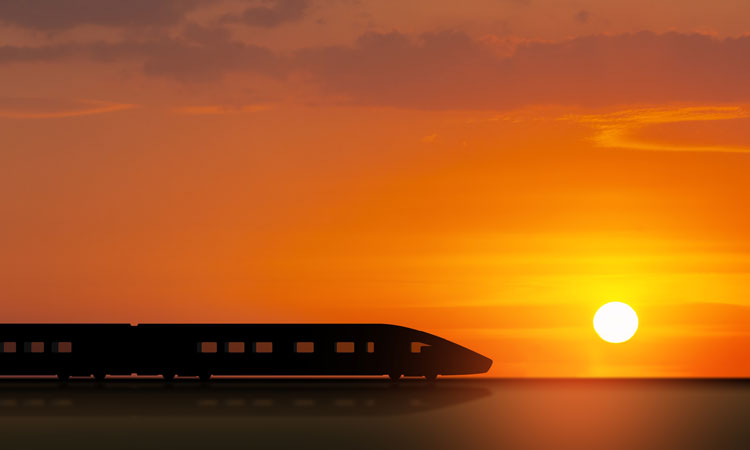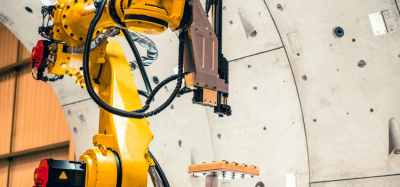Industry experts comment on global high-speed rail development
Posted: 11 May 2023 | Craig Waters (Editor - Global Railway Review) | No comments yet
The development of high-speed rail has made significant progress worldwide, providing faster, more efficient, and environmentally friendly transportation options. As technology advances and more countries invest in high-speed rail infrastructure, the potential for further expansion and integration of global high-speed rail networks becomes increasingly promising.


High-speed rail has become a significant focus of transportation infrastructure development in many countries around the world. With its ability to offer efficient and rapid travel, high-speed rail systems are increasingly being seen as a sustainable and reliable alternative to air and road transportation.
Take a look below at Global Railway Review’s recent video interviews with some of the industry’s champions and experts of high-speed rail development, to learn about their projects and hear what they have to say on the revolution of high-speed rail.
High-speed rail in Spain
Ángel García de la Bandera, Deputy Director of South Stations at Adif spoke about how Spain’s high-speed rail network compares to those found in other countries in Europe, what the environmental benefits are of the country’s high-speed rail network, and what more can be done to ensure high-speed train travel is more attractive to encourage people to stop using their cars and instead take the train. Watch the video with Ángel here or click below.
High-speed rail in Italy
Antonio Tresca, Head of Customer Service and Direct Sales High-Speed Trains at Trenitalia to understand more about how Italy’s high-speed rail network compares to those found in other countries in Europe, what amenities are available onboard Trenitalia’s high-speed trains and the main differences between their Frecciarossa and Frecciargento train services, the plans in place at Trenitalia to ensure an improved passenger experience for all in the future, and the importance of making high-speed train travel more attractive to encourage people to stop using their cars and instead take the train. Watch the video with Antonio here or click below.
Revolutionise travel in the Northeast Corridor
Ian Rainey, Senior Vice President of the Northeast Maglev details how the Superconducting Maglev (SCMAGLEV) – the world’s fastest and most advanced train – can revolutionise travel in the Northeast Corridor; home to 17% of the U.S. population and 20% of U.S. jobs – all on a land area that represents just 2% of the United States. Ian explores the core potential benefits of the network for commuters and travellers, costs and funding of the project, plus its environmental impact and benefits to the economy. Watch the video with Ian here or click below.
Connecting the Cascadia region with high-speed rail
Paige Malott, Founder of Train Explainer and Chair & Co-Founder of Cascadia Rail, explains the vision to connect the Cascadia region in the United States with a high-speed rail network. Cascadia Rail, founded in 2018, is organisation of advocates spanning from Washington, Oregon, and British Columbia who support a vision to connect the Cascadia region through high-speed rail. Paige explains what the funding and regulatory hurdles are with progressing the project, what the environmental and sustainability impacts of the project would be for the region, and what impact the project would have on the local economy. Watch the video with Paige here or click below.
Implementing the RRTS project across India’s NCR
Navneet Kaushik, Director Systems and Operation at the National Capital Region Transport Corporation (NCRTC), spoke about implementing the Regional Rapid Transit System (RRTS) project across the National Capital Region (NCR) of India. Navneet explains the importance of implementing the RRTS, the challenges faced by the NCRTC in moving the project forward and how to address them, incorporating sustainability and environmental concerns within the project, plus the current status of this Delhi-Ghaziabad-Meerut project, and when is it expected to be completed. Watch the video with Navneet here or click below.
High-speed rail and sustainability
Lucie Anderton, Head of Sustainability at the UIC, spoke about some of the challenges of building and operating high-speed rail in a sustainable way. She discussed how high-speed rail can contribute to reducing greenhouse gas (GHG) emissions and promoting sustainable transportation, the ways in which high-speed rail projects can be designed to promote sustainable development and minimise any negative impacts on the environment and communities, and what policies and regulations are needed to promote the development and operation of high-speed rail in a sustainable way. Watch the video with Lucie here or click below.
Dr. Inara Watson, Lecturer at London South Bank University (LSBU) spoke about the benefits of high-speed rail compared to other modes of transportation, the ways in which the industry can significantly reduce the energy consumption of high-speed rail, and how high-speed rail networks can be integrated with other modes of transportation to create a sustainable and efficient mobility network. Watch the video with Inara here or click below.
Italy’s ERTMS national plan and high-speed rail development
Stefano Marcoccio, ERTMS Project Manager at RFI, who spoke about his opinions on the primary obstacles in the advancement of high-speed rail development and how these barriers to development can be overcome, plus the importance of RFI’s ERTMS national plan to the transformation of high-speed rail in Italy. Watch the video with Stefano here or click below.
Challenges, benefits and impact of high-speed rail
Andrea Giuricin, Transport Economist, University of Milan Bicocca shared his views and opinions on the core benefits, challenges and opportunities for high-speed rail development. Andrea spoke about the main funding and regulatory challenges to constructing new high-speed rail networks, the economic impact of high-speed rail development on local and regional economies, the role government policies play in promoting or hindering high-speed rail development, how high-speed rail contributes to achieving global sustainability goals, and lots more! Watch the video with Andrea here or click below.
OUIGO España: high quality, high-speed services at low costs
Sergio Barcena, Director of Operations Planning and Maintenance at OUIGO España, shared his insight into delivering sustainable high-speed rail services that don’t require passengers to choose between affordability and quality. OUIGO España is a high-speed railway operator offering services between Madrid and some of the main cities in Spain (Barcelona, Zaragoza, Tarragona, Valencia, Albacete and Alicante). Read the interview with Sergio here.
High-speed rail: improving railway capacity allocation
Abderrahman (Abdou) Ait-Ali, Researcher at the Swedish Road and Transport Research Institute (VTI), told us more about what capacity allocation is and why it is important in deregulated railways. Abdou explained the main challenges associated with capacity allocation, the importance of moving forward with AI and data analytics to deliver improved capacity allocation, and how cost-benefit analyses can help to improve railway operations. Watch the video with Abdou here or click below.







